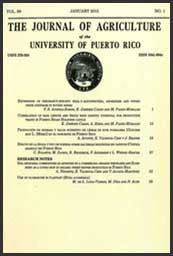Abstract
Tamarind (Tamarindus indica L.) is a large evergreen tree belonging to the family Fabaceae (Leguminosae). Its fruits are eaten fresh, processed into a paste, used as a spice, made into a beverage, and used for tanning hides. Although this commercially important species has a wide geographical distribution, research on tamarind is sparse. Hence, the purpose of our research was to characterize 13 genotypes of tamarind at the Subtropical Horticultural Research Station in Miami, FL, USA, and to determine whether physical and pomological traits of this collection in fact reflect the genetic diversity within this fruit tree species. This work was conducted at SHRS in Miami, Florida. The pomological diversity of 13 tamarind genotypes was analyzed based on 18 qualitative and quantitative traits. Principal components analysis (PCA) conducted on quantitative traits showed an important degree of variability of about 72% for the first three principal components. A dendrogram was constructed based on average distances. Cluster analysis grouped all tamarind genotypes into three major clusters ('A', 'B' and 'C'). Cluster 'B' includes the genotypes predominantly with brown to dark brown sweet and semi-sweet pulp and from South East Asia (Thailand and Philippines); the B cluster individuals were then grouped into sub-clusters 'B1', 'B2', 'B3' and 'B4'. Semi-sour genotypes were grouped in cluster 'A' and the sour genotype in cluster 'C' Cluster 'B' contained genotypes predominantly characterized by sweet, dark pulp, and smaller fruit size, while the sour genotypes were characterized by trees of sour pulp and from other regions (Australia, Brazil, India and the Caribbean). We detected moderate genetic diversity among these tamarind genotypes. This information could be used as a basis for selection during genetic improvement of tamarind genotypes.Downloads
Download data is not yet available.

